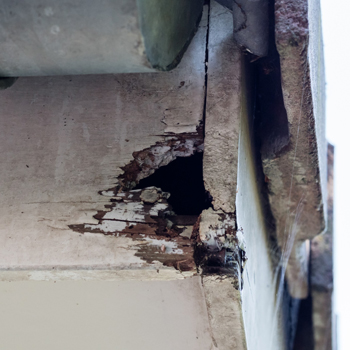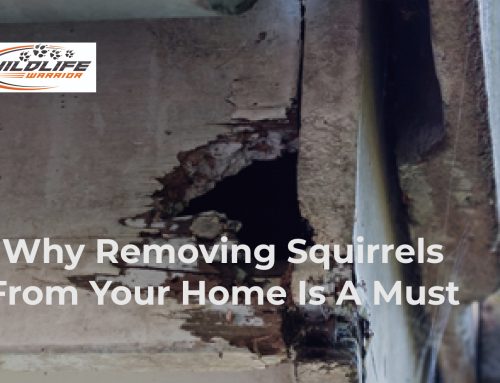At first glance, squirrels might seem harmless, darting from tree to tree. But when they make your attic their new home, they can cause more trouble than you think. Many homeowners don’t realize the risk until there’s already serious attic damage or worse.
Squirrels are quiet invaders. They slip in unnoticed, and before long, they’re tearing up insulation, chewing wires, and leaving behind hazardous waste. In this post, we’ll reveal five overlooked signs of a squirrel problem—and why spotting them early can help you avoid an expensive squirrel infestation.

Why Squirrels Are More Dangerous Than You Think
Once squirrels settle into your attic, they do more than just make noise. These animals have the ability to gnaw through electrical wire, increasing the danger of fire in your house. They also tear apart insulation, which can spike your energy bills. On top of that, squirrel droppings can pose health risks to your family.
Ignoring the signs of a squirrel infestation may result in costly repairs. Even small issues, like chewed wood or damaged vents, can quickly escalate into major problems.
5 Overlooked Signs You Might Have a Squirrel Problem
Even if you haven’t spotted squirrels directly, here are the subtle signs to watch for.
1. Strange Noises Coming From the Attic or Walls
Do you hear scratching or scurrying sounds, especially in the early morning or around sunset? Squirrels are most active during these times. Many people mistake these noises for birds or mice, but squirrels often create louder, more frantic sounds.
If you consistently hear movement above your ceiling or behind the walls, it could be squirrels making themselves at home.
2. Insulation That Looks Torn or Messy
Squirrels love shredding attic insulation to build their nests. If you notice patches of insulation that look ripped apart, it’s a clear warning sign. Higher heating or cooling expenses and low energy efficiency are the results of damaged insulation.
Check your attic for piles of shredded material or nesting debris. These are strong indicators of squirrel activity.
3. Chewed Electrical Wires or Wood
One of the most dangerous habits squirrels have is gnawing on things. They chew on wood, cables, and even metal since their teeth never stop growing. Look for bite marks on wooden beams or around the edges of your roofline.
More importantly, inspect for chewed wires. This can create a severe fire hazard if not handled quickly.
4. Unpleasant Odors or Droppings in the Attic
Over time, squirrel urine and droppings can create a strong, musty smell. You may not notice it at first, but as waste builds up, the odor gets worse. Droppings can also attract insects and encourage mold growth.
If you smell something unusual in your attic or see small, pellet-like droppings along beams or in corners, you’re likely dealing with unwanted guests.
5. Exterior Damage or Entry Points on Your Roof
Squirrels can squeeze through gaps as small as two inches wide. Common entry points include roof vents, soffits, eaves, and even chimneys. Signs of gnawed openings, loose vent covers, or holes along your roofline are worth investigating.
If it’s safe to do so, check your roof for damage where squirrels may be getting in. Any exterior gaps could mean they’ve already found a way inside.
How to Confirm a Squirrel Problem
Once you see any of these indicators, verifying the problem comes next. Look for droppings, tracks, or visible nests in the attic during the day when squirrels are likely outside. If you’re unsure, consider hiring a wildlife removal professional to perform an inspection.
Professionals can fairly evaluate the degree of the issue and suggest the best line of action.
What to Do If You Suspect Squirrels in Your Home
If you think squirrels are inside, don’t wait. Trying to remove them yourself can be risky—and illegal in some areas. Instead, contact a licensed wildlife control expert. They’ll know how to humanely remove squirrels and keep them from coming back.
After removal, seal up any entry points. Repair any attic damage, such as torn insulation or chewed wires, to prevent future problems. You should also trim trees away from your roof and install covers on vents and chimneys to discourage re-entry.
Hear the Scratching? Smell Something Strange? Your Attic Might Be Under Siege
A squirrel problem might start small, but it can quickly spiral out of control. Recognizing the overlooked signs—like noises in the attic, chewed wires, or foul odors—can help you catch an infestation early. Don’t ignore the risks of attic damage or the health hazards these pests bring.
If you think squirrels are nesting in your home, act fast. Contact a local wildlife removal professional to protect your home from a serious squirrel infestation and avoid costly repairs down the line.
Don’t wait until squirrels cause costly damage to your home. Contact Wildlife Warriors today for expert squirrel removal and prevention. Our team will safely evict unwanted pests and repair entry points to protect your home long-term. Call Wildlife Warriors now for a free inspection and keep your home squirrel-free!


